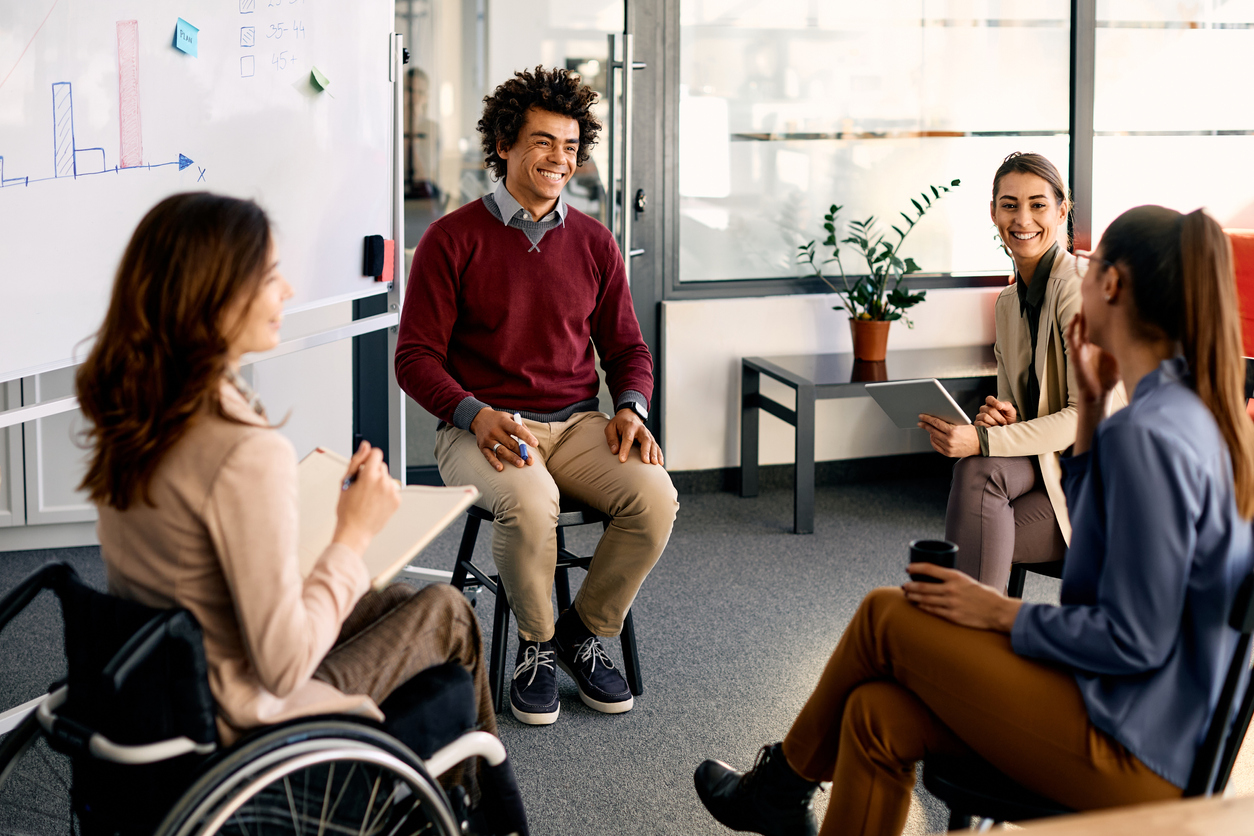
The ultimate checklist: Planning accessible meetings and events
Simona Cherneva

In an ideal world, everyone is able to attend your meeting or event. But planning accessible meetings and events can seem like an overwhelming task. No worries, we’ve got you. Here’s a handy checklist to prepare for your upcoming on-site venue visit.
The importance of accessible venues
Good access to your meeting or event means that more people can (and will) attend. Besides being a legal requirement, it's best practice to remove barriers for disabled people. And all of this starts long before booking your meeting venue.
When preparing accessible meetings, asking the venue sales representative is merely sufficient. Too often, meeting venues simply 'forget' that there might be small areas within the facility that are inaccessible to some users. On-site visits to meeting venues help you foresee barriers for persons with a wide range of disabilities.
Think of those heavy doors that some people might find hard to push and pull. Or those doors with springs that automatically close. Or the toilet that's barely big enough for a wheelchair to turn around.
“Feeling welcome to an event starts with accessibility. Often, I can’t even get into the venue at all because there are stairs or thresholds. It’s easy to solve this with a ramped board, but many venues don’t have that yet.”
– Claire (Meetingselect), who uses an electric wheelchair.
Often, these things fall under the radar. But when the meeting is in full action and you have disabled participants struggling to participate this is not good. All the more reason to check your accessible venues upfront.
1. Accessible venues: exterior
Planning accessible meetings and events doesn't stop with the meeting room itself. Consider the surrounding factors that might have an impact on your disabled participants travelling to and from the venue.
Truly accessible venues have:
- Slip-resistent, level surfaces
- Close proximity of venue from airport, train station, taxi stand, and public transportation
- Close proximity to restaurants and shops
- Ramps for inaccessible areas, equipped with handrails on both sides
- Accessible, clearly marked parking spaces with accessible loading zones
- Barrier-free and clearly marked, well-lit accessible main entrance at street level
2. Accessible venues: interior
Some venues and hotels are more accessible than others. You might have some control over things like registration and check-in desks, but there are variables you definitely need to check when visiting the venue for the first time. These include:
- Clearly marked elevators with tactile signage of the door and along an accessible route
- Elevator control buttons that are reachable by wheelchair users
- Elevator voice and visual display with two-way emergency communication
- Easy-to-open, light doors with lever handles easy to grasp with one hand or automatic/push button openers
- Wide (32 inches/90 degrees opening) doorway for wheelchairs and scooters to enter and exit
- Clearly marked accessible restrooms
- Emergency procedures for people with disabilities (audio and visual alarms in halls and sleeping rooms)
- Registration/Check-in desk at a height accessible by wheelchair users
- Accessible space for walking service animals
- Well-lit areas and adjustable lighting
3. Accessible social areas
Depending on the type and size of your accessible meeting or event, you might have social activities going on. You want to ensure that meals and functions, such as receptions, are accessible to participants with disabilities.
- Provide chairs with arms
- Avoid counter-top high tables and chairs
- Ensure that entertainment is accessible
- Arrange for accessible transportation
- Include finger foods that don't require people to use utensils or hold plates
- Ensure sufficient room between seating areas for wheelchairs/scooters
Curious to know more? Stay tuned for Part 2 next week. In the meantime, don't forget to book a demo


